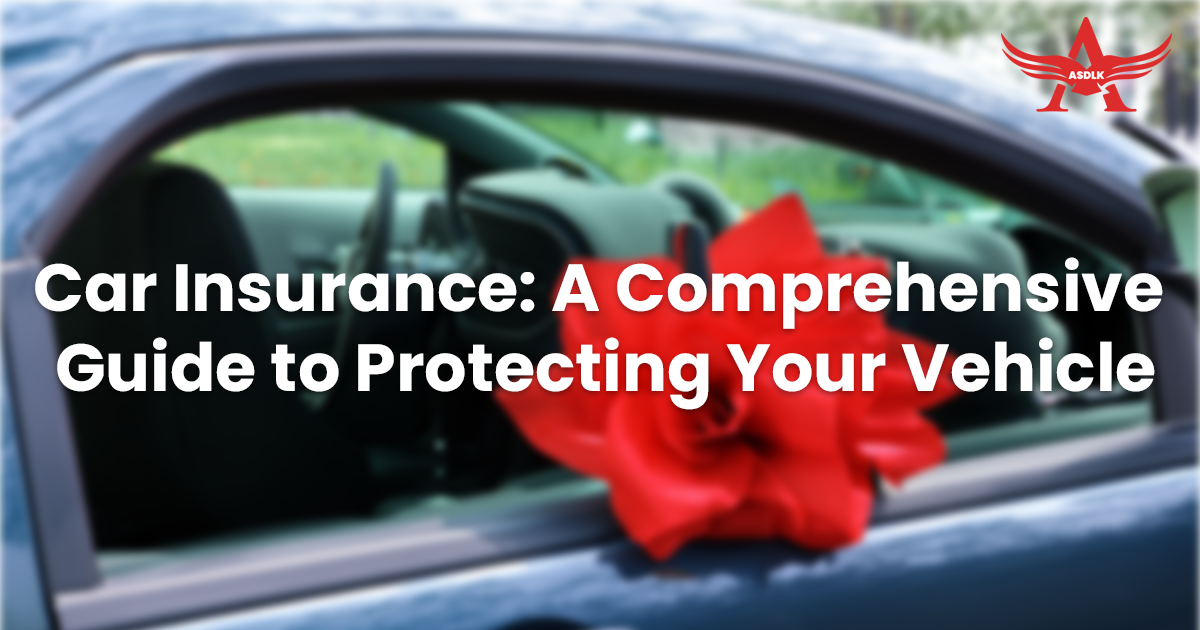Car insurance is an indispensable aspect of responsible vehicle ownership. Whether you’re a seasoned driver or a newbie on the road, understanding the intricacies of car insurance is crucial. This comprehensive guide will unravel the complexities, provide insights into various coverage options, and equip you with the knowledge needed to make informed decisions about your car insurance policy.
Chapter 1: The Basics of Car Insurance
Before diving into the nitty-gritty of car insurance, let’s start with the basics.
1.1 What is Car Insurance?
Car insurance is a contract between you and an insurance company, wherein you pay a premium in exchange for financial protection in case of accidents, theft, or damage to your vehicle.
1.2 Why is Insurance Essential?
insurance is not just a legal requirement in most places; it also provides financial security. It shields you from unexpected expenses that could otherwise drain your savings.
Chapter 2: Types of Insurance Coverage
Understanding the different types of coverage options is crucial in tailoring your policy to your needs.
2.1 Liability Insurance
Liability insurance covers the costs of injuries or damages you cause to others in an accident. It’s typically mandatory in most states.

2.2 Collision Coverage
Collision coverage provides coverage for the cost of repairing or replacing your vehicle when it’s involved in a collision with another vehicle or object.
2.3 Comprehensive Coverage
Comprehensive coverage covers non-collision incidents, such as theft, vandalism, or damage from natural disasters.
2.4 Personal Injury Protection (PIP) and Medical Payments Coverage
These cover medical expenses for you and your passengers in the event of an accident, regardless of fault.
2.5 Uninsured/Underinsured Motorist Coverage
This protects you if you’re in an accident with a driver who lacks insurance or doesn’t have enough coverage.
Chapter 3: Factors Affecting Insurance Rates
insurance premiums are influenced by a variety of factors.
3.1 Your Driving Record
A clean driving record typically leads to lower premiums, while accidents and traffic violations can increase rates.
3.2 Vehicle Make and Model
High-performance or luxury cars often have higher rates.
3.3 Age and Gender
Younger, less experienced drivers and males tend to have higher insurance rates.
3.4 Location
Your location can affect rates due to factors like traffic density and crime rates.
3.5 Credit Score
Evaluating quotes from various insurance providers can assist you in identifying the most favorable offer.
Chapter 4: Ways to Save on Car Insurance
Car insurance doesn’t have to be prohibitively expensive. There are ways to lower your premiums.
4.1 Bundle Your Policies
Combining auto and home insurance can lead to discounts.
4.2 Raise Your Deductible
Increasing your deductible can lower your premiums, but be prepared to pay more out of pocket in case of a claim.
4.3 Maintain a Good Driving Record
Safe driving habits can lead to discounts over time.
4.4 Anti-Theft Devices
Installing anti-theft devices can deter theft and lower premiums.
4.5 Shop Around
Comparing quotes from different insurers can help you find the best deal.
Chapter 5: The Claims Process
Knowing how to navigate the claims process is essential for a stress-free experience after an accident.
5.1 Reporting the Incident
Promptly report the incident to your insurer, providing all necessary information.
5.2 Getting Estimates
Get repair estimates from trusted mechanics or body shops.
5.3 Claims Adjuster
An insurance adjuster will assess the damage and determine coverage.
5.4 Repair or Replace
Based on the assessment, your insurer will either pay for repairs or provide compensation for a total loss.
Chapter 6: Frequently Asked Questions
Addressing common questions and concerns about car insurance.
6.1 Can I Drive Without Insurance?
In most places, driving without insurance is illegal and can lead to penalties.
6.2 What If I Lend My Car to Someone?
Your insurance generally follows the car, so if someone you lend your car to gets in an accident, your insurance may be affected.
6.3 Do I Need Full Coverage?
The need for full coverage depends on your circumstances and the value of your vehicle.
Conclusion
Car insurance might seem complex, but it’s essential for safeguarding your financial well-being and complying with legal requirements. By understanding the basics, exploring coverage options, and implementing money-saving strategies, you can make informed decisions and find the right car insurance policy for your needs. Remember, an investment in good coverage today can save you from financial headaches tomorrow. you may like our previous article regarding home insurance.